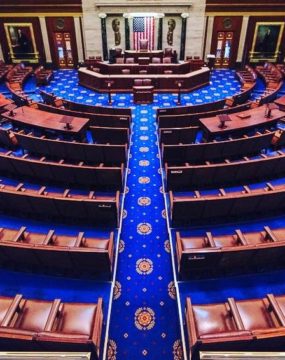Keep up with our latest demographic insights

The 2020 Census data collection officially ended on October 15th. In a typical year, we would expect to receive apportionment counts for the U.S. House of Representatives by December 31st and the redistricting data would be delivered by March 31, 2021. This is not a typical year: we still do not know when 2020 Census data will be released. While we wait to find out more details on the 2020 Census release schedule, here’s what…
We originally discussed reapportionment and redistricting in North Carolina in a series of posts in November 2015. To reflect the newly redrawn congressional maps, we updated our 2014 population estimates for congressional districts. This post updates the 2020 population projections for North Carolina’s congressional districts. North Carolina will likely have 14 seats in the U.S. House of Representatives following the post-2020 Census reapportionment process. While we cannot guarantee a 14th seat (no matter how likely),…
Following the decennial Census, political districts, such as U.S. Congressional Districts and state legislative districts, are reapportioned to states and counties on the basis of population and their boundaries are redrawn in a process called redistricting. Broadly speaking, the goal of redistricting is to make each district as close in population size in possible. North Carolina is not the only state with uneven patterns of population growth. Across the United States, population is increasingly concentrated in urban and…
North Carolina’s redrawn congressional districts had equal population in 2010, but North Carolina’s population growth since then has been highly uneven. Two counties, Wake and Mecklenburg, have accounted for nearly half of the state’s growth between 2010 and 2014, while 49 of 100 counties lost population over this time period. How many people are currently living in the newly defined congressional districts? And how much do their current populations deviate from the equal population size that is the goal of every decennial redistricting? The U.S. Census Bureau’s American Community Survey provides annually updated demographic information for congressional districts, but it will take some time for the newly defined boundaries to appear in the ACS data. Using our neighborhood change dataset and the July 1, 2014 county estimates from the U.S. Census Bureau, we estimated the number of people living in each of North Carolina’s congressional districts on July 1, 2014. Detailed information on the data and methodology used to produce these estimates is available here.
Following the decennial Census, political districts, such as U.S. Congressional Districts and state legislative districts, are reapportioned to states and counties on the basis of population and their boundaries are redrawn in a process called redistricting. Broadly speaking, the goal of redistricting is to make each district as close in population size in possible. While North Carolina’s population growth continues to outpace the nation, this growth is concentrated in the state’s urban areas. Nearly half of the state’s population growth since 2010 has occurred in two counties—Wake and Mecklenburg. Over this same time period, 49 of the state’s 100 counties have lost population. Today’s post explores the implications of these population shifts on the state’s legislative districts.
When discussing redistricting, I’ve heard individuals raise the question, “Why don’t we just let computers draw the lines and be done with it?” And why not? We let computers run so many aspects of our lives, why not this one as well? While computers and GIS software are fundamental to the completion of redistricting tasks, programming the computer to draw the maps requires firmly established criteria. Even with clear criteria, there are thousands of legal…
North Carolina will likely have 14 seats in the U.S. House of Representatives following the post-2020 Census reapportionment process. While we cannot guarantee a 14th seat (no matter how likely), we can guarantee significant changes to the state’s congressional district boundaries during the 2021 redistricting process. North Carolina’s population has grown substantially in the past few decades, and it continues to grow. At the same time, population is increasingly concentrated in urban cores within the…
Based on the 2010 census, North Carolina’s total number of congressional districts remained the same during the reapportionment process—13 House seats. But not every district drawn 10 years earlier that was based on the 2000 Census data grew at the same rate over the decade. There was significant variation in population growth across the state: major metropolitan areas grew rapidly, while other areas experienced slow growth or population declines. North Carolina’s post-2010 redistricting process required…
Every decade, following the release of decennial census data and the reapportionment process, state legislatures and committees redraw district boundaries to account for population changes. This process is called redistricting. As of 2010, there were 43 states with at least two congressional districts, meaning that they must undergo a redistricting process. Two federal guidelines govern redistricting. Both of them are based on demographic data: equal population in each district and the protection of racial/ethnic voting…
The major function of the decennial census is apportionment, the allocation of the 435 seats in the U.S. House of Representatives to states based on their population size. Every 10 years, following reapportionment, states undergo a redistricting process, redrawing congressional (and other) district boundaries to reflect population changes within their state. Individual redistricting guidelines vary from state to state, but basic federal requirements for congressional redistricting mandate equal population size among the redrawn congressional districts…
Your support is critical to our mission of measuring, understanding, and predicting population change and its impact. Donate to Carolina Demography today.